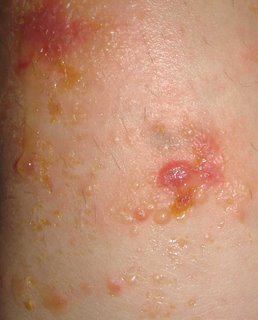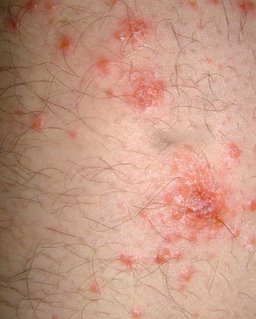

It's likely that this is from something dispersed in the brackish water they ran through. Runners from other schools were affected as well. About 50 runners from Williams College developed the eruption.
The possibilities include:
Atypical plant contact dermatitis (Some plant toxin such as urushiol churned up by the storm and floating in the water.)
Jellyfish nematocysts free floating after the storm and blown in
Bird schistosomes -- this is severe for that.
Bacterial infection (a culture was taken from one student and results were not specific)
Do you have other thoughts? What is your opinion?
Solution: The Cross Country course was redirected after the storm. A new path was cut though brush to circumvent a brackish area. It is likely that the new path went through poison ivy. The appearance of the rash 24 - 48 hours after exposure in the majority of runners and the quality of the itch suggests rhus contact dermatitis.
I vote for "inverse" seabather's eruption. The rapid onset of pruritic papules and vesicles after sea water exposure suggests seabathers eruption due to jellyfish larvae nematocysts stings. Perhaps the reason that the typical skin areas affected in seabather's eruption (skin under the bathing suit or shirt worn while swimming) were spared in the runners was that their only skin areas exposed to the sea water were the areas that were splashed while running in the surf.
ReplyDelete---Rick Sontheimer